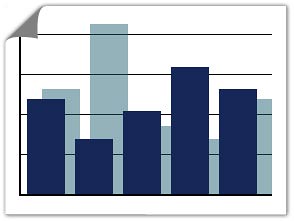I wish someone on the Metro board would ask Metro about this.
To me, Metro's future looks worse than I'd ever thought, as promised service levels from 2006 to 2011 don't appear to have materialized and labor costs continue to balloon, according to data from the National Transit Database (NTD).
The below chart paints a very ugly picture, showing just how much promised rail service appears to have never happened, despite Metro doing everything possible to make it look otherwise.
To me, Metro's future looks worse than I'd ever thought, as promised service levels from 2006 to 2011 don't appear to have materialized and labor costs continue to balloon, according to data from the National Transit Database (NTD).
The below chart paints a very ugly picture, showing just how much promised rail service appears to have never happened, despite Metro doing everything possible to make it look otherwise.
Transit agencies like Metro are required by law to report certain performance statistics to the NTD. According to the website, the stats are used divvy up some $5 billion in Federal Transit Administration funds among the nation's transit agencies.
The "revenue mile" referenced equals one mile traveled by a vehicle, in this case a rail car, with paying passengers on board.
In the chart, the red line shows the number of revenue miles Metro said they would provide (and presumably were funded for) from 2006 to 2013. The numbers can be found in the approved budgets. It shows, as you can see, a steady increase in proposed service--on paper.
However, the chart's blue line is the number of revenue miles Metro reported to the NTD as actually having been delivered. The gaps between projected and reported have grown, sometimes dramatically, yet Metro keeps giving a rosy outlook year after year.
In 2011, for example, Metro budgeted for 81,569,545 revenue miles when it reported to the NTD that it only ran 67,234,252 revenue miles. That's an almost 18 percent difference. One could look at it like an 18 percent cut in promised service.
Perhaps the loss of revenue miles is due to all the track work, but if that were the case, why does Metro continue to raise the estimates in its budget documents?
I wonder how the jurisdictions feel about funding a service Metro appears to not be providing. I know how riders feel when the fares go up and the service doesn't improve.
2009, the year of the deadly Red Line crash, is an inflection point for both budgeted and reported revenue miles, but the reported miles nosedived while Metro's promised service remained flat for the year.
Suddenly, reports of ridership dropping by five percent recently look pretty good considering what looks like an 18 percent cut in service.
Meanwhile, labor costs (salaries, wages and benefits), Metro's biggest expense, rose a whopping 30 percent (19 when adjusted for inflation) from 2006 to 2011. In 2006, Metro spent $831,667,228, and in 2011, it spent $1,082,683,205, according to the NTD data.
It should be noted that the NTD has quite a big caveat on its data, but if they're basing funding on it, it can't be that bad. Both NTD and WMATA data seem designed to be as opaque as possible.
*This article was done in collaboration with Michael Perkins, who due to a misunderstanding, wrote a similar article at Greater Greater Washington.
The "revenue mile" referenced equals one mile traveled by a vehicle, in this case a rail car, with paying passengers on board.
In the chart, the red line shows the number of revenue miles Metro said they would provide (and presumably were funded for) from 2006 to 2013. The numbers can be found in the approved budgets. It shows, as you can see, a steady increase in proposed service--on paper.
However, the chart's blue line is the number of revenue miles Metro reported to the NTD as actually having been delivered. The gaps between projected and reported have grown, sometimes dramatically, yet Metro keeps giving a rosy outlook year after year.
In 2011, for example, Metro budgeted for 81,569,545 revenue miles when it reported to the NTD that it only ran 67,234,252 revenue miles. That's an almost 18 percent difference. One could look at it like an 18 percent cut in promised service.
Perhaps the loss of revenue miles is due to all the track work, but if that were the case, why does Metro continue to raise the estimates in its budget documents?
I wonder how the jurisdictions feel about funding a service Metro appears to not be providing. I know how riders feel when the fares go up and the service doesn't improve.
2009, the year of the deadly Red Line crash, is an inflection point for both budgeted and reported revenue miles, but the reported miles nosedived while Metro's promised service remained flat for the year.
Suddenly, reports of ridership dropping by five percent recently look pretty good considering what looks like an 18 percent cut in service.
Meanwhile, labor costs (salaries, wages and benefits), Metro's biggest expense, rose a whopping 30 percent (19 when adjusted for inflation) from 2006 to 2011. In 2006, Metro spent $831,667,228, and in 2011, it spent $1,082,683,205, according to the NTD data.
It should be noted that the NTD has quite a big caveat on its data, but if they're basing funding on it, it can't be that bad. Both NTD and WMATA data seem designed to be as opaque as possible.
*This article was done in collaboration with Michael Perkins, who due to a misunderstanding, wrote a similar article at Greater Greater Washington.











 Oct. 11, 2012
Oct. 11, 2012 February 21, 2012
February 21, 2012 March 4, 2010
March 4, 2010




